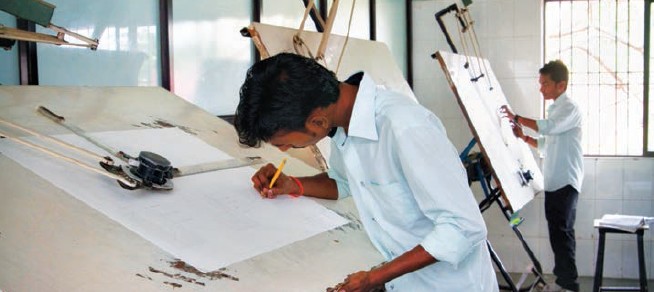The world today has enhanced productivity requirements. Due to this, the demand for highly skilled labour is growing. China and India are set to drive this demand. Globally, the share of low-skill jobs is likely to decline from 74% of employment in 2010 to 62% by 2020. On the other hand, the shortage of highly skilled workers with a tertiary level of education is expected to reach 18 million by 2020, globally. But due to its demographic dividend, India will have a labour surplus of 47 million by 2020. However, this surplus may only be of low-skilled labour. And while the demand for highly skilled labour is increasing, the supply isn’t quite keeping up. The challenge, as well as opportunity, that India faces is how to train such a large reserve of labour and convert low skills to high skills. One solution that immediately comes to mind is providing higher education for all. But at present only 24% of those meant to be participating in higher education, are actually enrolled. Plus, traditional college or university pedagogy has been increasingly criticized for being outdated and irrelevant to the jobs market. If you attended school or college in India, you will have first-hand experience of the ills that plague the system.

Some of the reasons for this are:
- Absence of a customized or personalized approach to education (necessary as different students have different needs and learning capabilities).
- Restricted resources due to not-for-profit nature of educational institutes and over-regulation.
- Lack of technology infrastructure.
- Poor teaching quality.
- Lack of skills-based learning.
- Low focus on research and development.
- Minimal partnerships with industry/foreign academia.
- Outdated curricula not reflecting requirements of a dynamic market environment.
Only about 25% of Indian graduates are considered employable by the organized sector. Further, 48% of Indian employers said they were having difficulty in filling jobs, in 2012. Despite employers expressing difficulty in finding employable candidates, in 2009-10 the unemployment rates in India were higher for those who were more educated (graduates had more difficulty finding jobs than secondary or primary level graduates). “ Skillintensive industries are expected to contribute more than 90% of India’s GDP by 2030. The opportunity is staring at us in the face. Featuring fresh takes and realtime analysis from HuffPost’s signature lineup of contributors 1 July 2016 iOS app Android app More MORE: So Indian education, in its current form, hasn’t proved to be enough training for the incoming workforce. The numbers also prove that just completing higher education in any field is not all it takes anymore. This pinch is being increasingly felt as the world of jobs is turning upside down; which is why we need skill training. Skill-intensive industries are expected to contribute more than 90% of India’s GDP by 2030. The opportunity is staring at us in the face. It’s not just about the potential but also the responsibility we are tasked with — restoring balance to the global supply of labour. The country needs to invest in skill development and training for a large chunk of its population. Exploiting sheer numbers is therefore one major reason to skill our workers. Secondly, the demand for advanced skill-sets in emerging areas is growing. Knowledge-intensive roles such as finance, business, etc, and those related to information technology and entrepreneurship are gaining momentum. The reality that these skills must be acquired will take root for more and more individuals, including drop outs from the mainstream education system and those who have completed such education. Currently, the actual supply of these workers falls drastically short of matching growing demand. Hence, the gaps in domain knowledge are another reason to scale up the skilling.
In China about 47% of the workforce has received some kind of skill training, 52% in USA, 68% in UK, 75% in Germany, 80% in Japan and 96% in South Korea. Comparatively, only about 10% of the Indian workforce received such training in 2008. India is seventh in the category of countries facing maximum difficulty in filling jobs, i.e., 58% difficulty, where the global average is 38%. These figures reflect that just belonging to the young Indian demographic is not enough. You are likely to be at a disadvantage, in terms of skill training and thereby employability, when compared to someone your age in China, USA, South Korea etc. To address these imbalances, India needs unprecedented increase in both education and job creation. At this point, there is no guaranteed advantage for India in the contest for high-skill talent. It will be dependent on skilling. Considering the state of higher education and the skill upgrade required to be carried out in the future, the process will not just be about learning for professionals, but rather unlearning and relearning.
Source: Huffingtonpost India